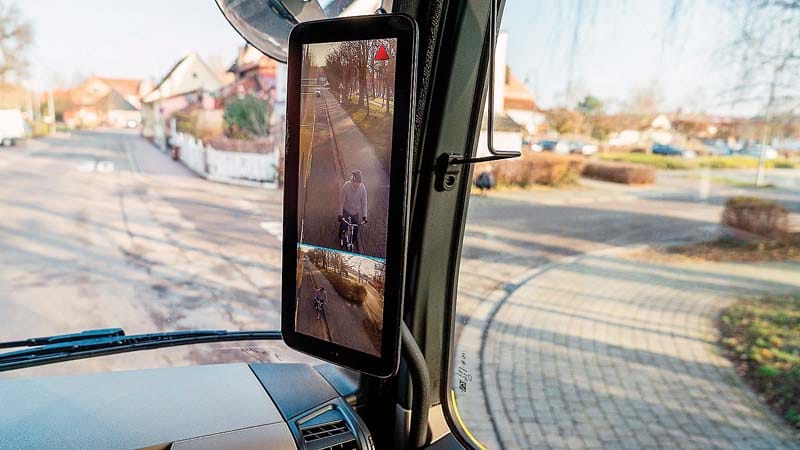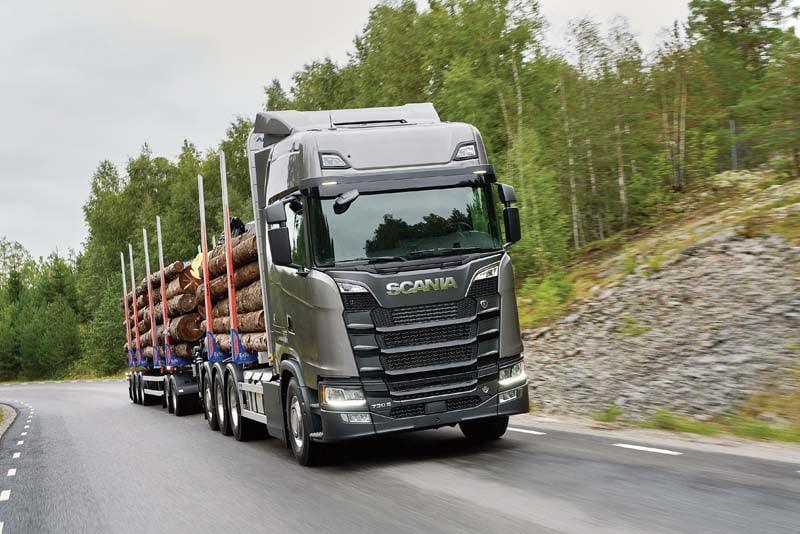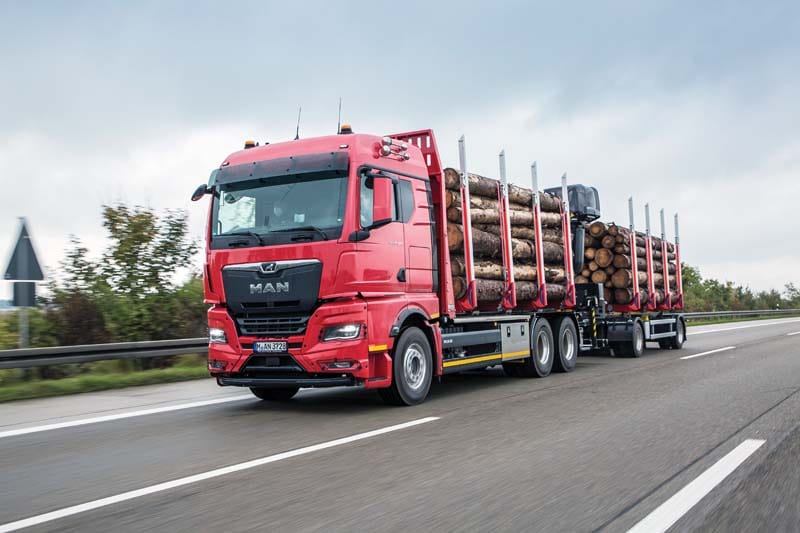Driven by EU regulations, commercial vehicles continue to make significant and rapid progress. Ashish Bhatia with inputs from Prateek Pardeshi checked on measures for safer EU roads by 2022.

The European Union(EU) is determined to put an end to road fatalities by 2022. Following the instance of several fatalities involving motor vehicles like commercial vehicles, the EU proposed to mandate key safety systems that hold the potential to reduce such fatalities leading up to 2022. Regulation (EU) 2019/2144 of the European Parliament and of the Council on type-approval requirements extended to motor vehicles including trucks and buses, vans, trailers and systems, components and separate technical units. Building on the May 2018 ‘Europe on the move’ package, aimed at making mobility systems safer, cleaner and automated, the 2019 mandate covered general safety and the protection of vehicle occupants including vulnerable road users. As per the mandate, vehicles would have to be equipped with advanced safety systems. The move, according to Timo Harakka, Minister of Transport and Communications, Finland, had the potential to reduce road fatalities and severe injuries on EU roads by a significant margin. It was said to address specific concerns of the vulnerable users, a decade after its predecessor. With it, improves the global competitiveness of locally produced vehicles.
OEM obligations
 The mandate, in effect, meant that truck, bus, and van Original Equipment Manufacturers (OEMs) were required to comply. Manufacturers had their task cut out when they were asked to include intelligent speed assistance; alcohol interlock installation facilitation; driver drowsiness and attention warning systems; advanced driver distraction warning systems; emergency stop signals; reversing detection systems; event data recorders and accurate tyre pressure monitoring. In addition to these, vans were required to include advanced emergency braking systems; emergency lane-keeping systems and enlarged head impact protection zones given that the penetration of vans among other categories of personal vehicles grew from three per cent in 1996 to 14 per cent in 2016, forcing a relook. The mandate also introduced guidelines on manufacturing trucks and buses. This category of vehicles was asked to be designed and manufactured with a special focus on the significant reduction of life-threatening blind spots. Using advanced systems, for instance, the proximity of cyclists and pedestrians to the vehicle would be detected.
The mandate, in effect, meant that truck, bus, and van Original Equipment Manufacturers (OEMs) were required to comply. Manufacturers had their task cut out when they were asked to include intelligent speed assistance; alcohol interlock installation facilitation; driver drowsiness and attention warning systems; advanced driver distraction warning systems; emergency stop signals; reversing detection systems; event data recorders and accurate tyre pressure monitoring. In addition to these, vans were required to include advanced emergency braking systems; emergency lane-keeping systems and enlarged head impact protection zones given that the penetration of vans among other categories of personal vehicles grew from three per cent in 1996 to 14 per cent in 2016, forcing a relook. The mandate also introduced guidelines on manufacturing trucks and buses. This category of vehicles was asked to be designed and manufactured with a special focus on the significant reduction of life-threatening blind spots. Using advanced systems, for instance, the proximity of cyclists and pedestrians to the vehicle would be detected.
Building upon regulation (EU) 2019/2144, the regulation is known to have paved the way for a look at emerging segments like hydrogen-powered vehicles and automated vehicles. For instance, in the case of hydrogen vehicles, the regulation called for uniform procedures and technical specifications for the type approval of hydrogen-powered vehicles. It extended to hydrogen systems pertaining to material compatibility and fuelling receptacles including type approval of components and their technical specifications. The focus is as much on future technical developments. Not just that, the EU commission, in a holistic approach looked at road safety management too. This extended to better design of roads, tunnels and bridges where these vehicles ply. It is in line with the mission programme to attain zero fatalities by 2050 as per the sustainability and smart mobility strategy are known to have been adopted on December 09, 2020.
A network-wide road assessment will be carried out every five years to evaluate road accident risk. The regulation stated the need to build dedicated technical units at the Union level. The systems are to be built to last the life cycle of the vehicle in concern. A switch-off feature must be under the direct control of the driver in case of inappropriate feedback received from such advanced systems owing to extreme weather conditions, conflicting road markings, or defective and or misleading road signs. Here member states were assigned with the responsibility of conducting road safety analysis and assessing the effectiveness of the features introduced.
Active safety at CV majors
 In line with the EU safety regulation, Daimler Trucks AG is actively working towards a zero-accident goal. According to Ingo Scherhaufer, Head – Active Safety at the OEM, the company is all for such safety systems and their mass availability. Citing the need to be clear on the relevance of systems for different vehicle systems, like differentiating a van from a truck or for that matter a bus from a truck, Scherhaufer drew attention to the development of systems for different accident situations. In trucks, for example, he explained the cause of accidents due to rear-end collisions and lane departures majorly. To address these concerns, the company is banking on systems like the Active Brake Assist 5 capable of responding to hard braking.
In line with the EU safety regulation, Daimler Trucks AG is actively working towards a zero-accident goal. According to Ingo Scherhaufer, Head – Active Safety at the OEM, the company is all for such safety systems and their mass availability. Citing the need to be clear on the relevance of systems for different vehicle systems, like differentiating a van from a truck or for that matter a bus from a truck, Scherhaufer drew attention to the development of systems for different accident situations. In trucks, for example, he explained the cause of accidents due to rear-end collisions and lane departures majorly. To address these concerns, the company is banking on systems like the Active Brake Assist 5 capable of responding to hard braking.

Active Brake Assist (ABA) Level 5 makes use of data from a suite of radar and sensors delivered to the Engine Control Unit (ECU). When the ECU detects close proximity, it transmits data to the actuator, and the brakes are applied automatically, even if the driver fails to engage the brake pedal. The ABA level 5 system operates in two stages: the first stage provides the driver with a visual and aural (audible) warning ahead of the truck initiating partial braking. The safety system overrides the braking system and uses its full potential to bring the truck to a complete halt backed by hazard light alerts. This technology is capable of detecting both stationary and moving pedestrians. Within the urban borders, this system operates at a speed of 50 kmph. On highways, the technology identifies both moving and stationary vehicles up to a speed of 80 kmph. ABA level 5 was recently developed and the New Daimler Actros, and other variants are equipped with this feature. The chance of a catastrophe is significantly lowered by using this safety feature.
Daimler also offers the ‘MirrorCam’ and the ‘Sideguard Assist’ on the new Actros. Of the two, the MirrorCam adds intelligence to conventional truck mirrors. Known to operate with digital cameras, it transmits images to the displays fitted on the A-pillars. The end result is an enhanced 360-degree view over previous generations. Coupled with the Sideguard Assist, it covers the right-hand side of the vehicle often out of the driver’s purview. For instance, if a vulnerable person like a cyclist or a pedestrian is approaching from the right, the MirrorCam relays a visual warning. An audible warning follows it. The Sideguard Assist is available on Mercedes-Benz Actros long-distance haulage trucks and has been made available on Mercedes-Benz Arocs construction vehicles, Mercedes-Benz Econic, Daimler Buses and the Fuso Super Great in Asia.
Scania AB has been a supporter of Cooperative Intelligent Transport Systems (CITS) for some time now. CITS is known to have facilitated the connection between OEMs, and OEMs with road operators. Aimed at increasing road traffic safety. Truck platooning, for instance, has multi-brand trucks platooning on European roads supported by the investment of heavy vehicle manufacturers like Scania. In November 2020, the company launched Electrically Assisted Steering (EAS) aimed at enhancing driver experience with safety assistance. The Advanced Driver Assistance System (ADAS), as is expected, reduces driver fatigue and claims to make them more alert. The EAS driven ADAS is known to become active at 60 kmph with the driver required to keep hands on the steering wheel at all points and times. Scania offered it as an option on its trucks range. In addition, the inward swing door on the L-series contributes to enhanced visibility.

In 2021, Scania tested self-driving trucks in collaboration with TUSimple. It is known to have covered level 4 on the 5-point SAE scale of self-driving vehicles. Entail self-driving under driver supervision, has the test engineer onboard on the truck monitoring and verifying the feedback from the truck sensors responsible for autonomous driving. Hans Nordin, responsible for the Hub2hub project, states that the experience gained from these tests is testimony to autonomous vehicles becoming a reality especially in closed areas like mines and terminals. He admitted to the technology taking a little more than half a decade especially on roads with two-way traffic. Through Scania’s venture capital fund, the company is known to have invested Euro 7.5 million as a push for its Light Detection and Ranging (LiDar) technology. Scania has got its truck cabs certified with a Whole Vehicle Type Approval (WVTA).
MAN Truck & Bus has demonstrated its focus on safety systems in trucks. The company’s assistance systems include a MAN attention guard that helps detect unusual steering behaviour triggering a driver warning. It triggers at speeds greater than 60 kmph and evaluates key performance metrics to evaluate the driver level of attention. The warnings are both visual and acoustic in nature and available on the International Truck Of The Year MAN TGX and the MAN TGM. The MAN Lane Change Support system monitors the left and right-hand sides of the truck. It is particularly useful when changing lanes and gives out a two-stage warning using LED bands in the A-pillars. It triggers at a speed of 50 kmph. The MAN Turn Assist comes in handy to monitor blind spots on the co-driver side. Using two radars the driver is offered a 180-degree view at speeds sub 30 kmph.  It alerts the driver during a tricky turn and triggers a three-stage warning using LED bands in the A-pillar. It gives the driver time to react and prevent a collision. Through MAN Brake Assist, the driver is warned in emergency braking situations. Using a combination of a radar sensor (front of the vehicle) and a camera (on the windscreen), traffic is monitored on a continuous basis to study distances, positions and speeds and trigger emergency braking when needed. In case of emergency braking to prevent a rear-end collision, light system signals alert surrounding vehicles with an increasing flash rate. Notably, as a standard, the emergency brake assist cannot be switched off. It is available on the MAN TGX, TGS, TGL and TGM.
It alerts the driver during a tricky turn and triggers a three-stage warning using LED bands in the A-pillar. It gives the driver time to react and prevent a collision. Through MAN Brake Assist, the driver is warned in emergency braking situations. Using a combination of a radar sensor (front of the vehicle) and a camera (on the windscreen), traffic is monitored on a continuous basis to study distances, positions and speeds and trigger emergency braking when needed. In case of emergency braking to prevent a rear-end collision, light system signals alert surrounding vehicles with an increasing flash rate. Notably, as a standard, the emergency brake assist cannot be switched off. It is available on the MAN TGX, TGS, TGL and TGM.

Volvo Trucks Corporation is equally focused on the zero-accidents goal. Of the belief that the safest accident is the one that doesn’t happen, the CV major has built smart safety systems too. For instance, in its electric trucks range, to introduce an ambient sound, the company has built an acoustic alert sound system. It is designed to alert vulnerable users by making them aware of approaching trucks. From July 01, 2021, electric trucks in Europe are mandated to emit a certain sound level when travelling at sub 20 kmph speeds (56 dB at 20 kmph). This sound increases at higher levels. Through four sound variants, the pedestrian is informed on moving forward, idling, and reversing for example.

Quieter vehicles are required to have an external acoustic vehicle alerting system. “We truly welcome this new legislation. From when we were children, we have learnt to rely not only on what we see but also what we hear in traffic – sometimes so much so that we don’t even look before crossing a street! With our new alert system, we want to help ensure that pedestrians and cyclists notice when they are close to our electric trucks,” states Anna Wrige Berling, Traffic and Product Safety Director at Volvo Trucks. In the new generation of Volvo FH, FH 16, FM and FMX, safety is a key focus area too. For instance, in the new cab, the raised A-pillars introduce light to the workspace. Driver visibility is improved with the addition of a passenger corner camera that gives enhanced side vision on an in-cabin display. Through ‘Distance Alert’, the windscreen warns drivers with a red light on getting too close to the vehicle ahead. This is crucial to preventing a collision. Part of collision warning with an emergency brake is aimed at preventing accidents. The safety system makes use of a camera and a radar to calculate distance and for on-road object identification.
Open to feedback
It is unanimously agreed that roadworthiness is crucial to road safety coupled with the twin objective of attaining the environmental object over the vehicle lifecycle. While it is adding to the complexity of vehicles in the EU, a vehicle inspection is also evolving. For fine-tuning the initiative, the European Commission has invited feedback from stakeholders in the first phase until November 01, 2021, to be followed by a round of public consultation and commission adoption.
Also read, India’s GPS system NavIC





















